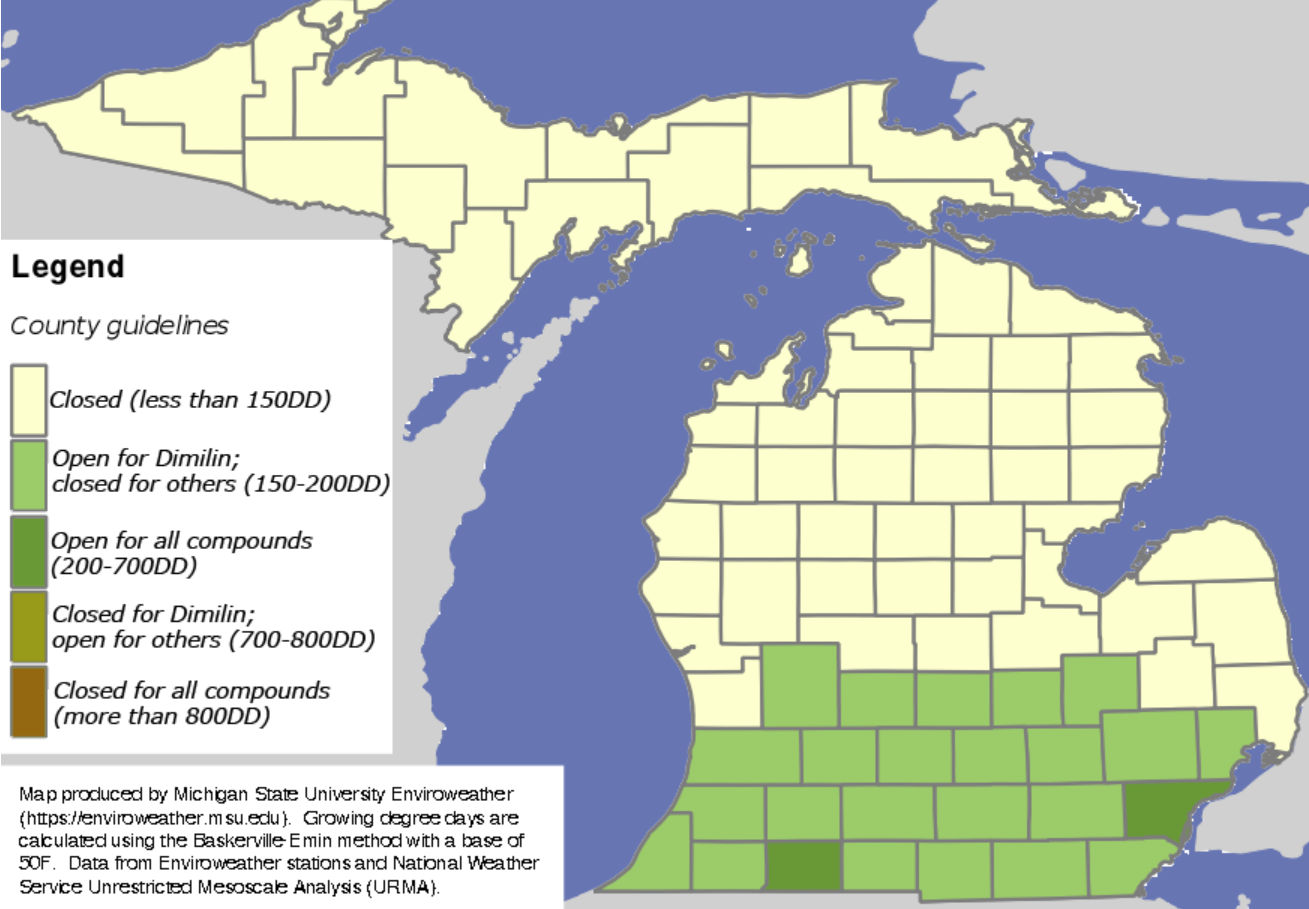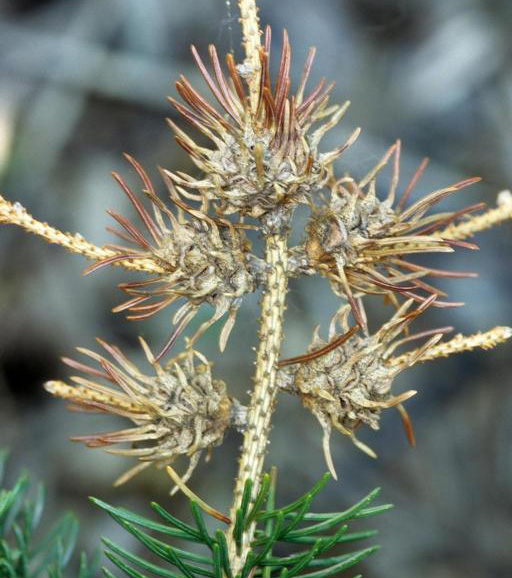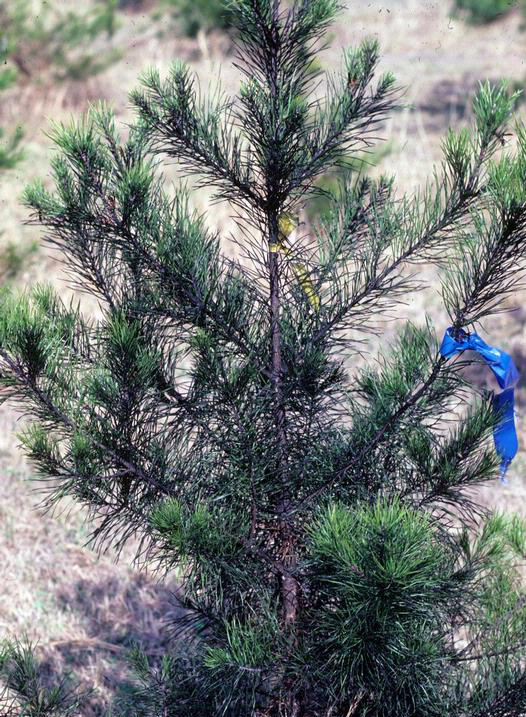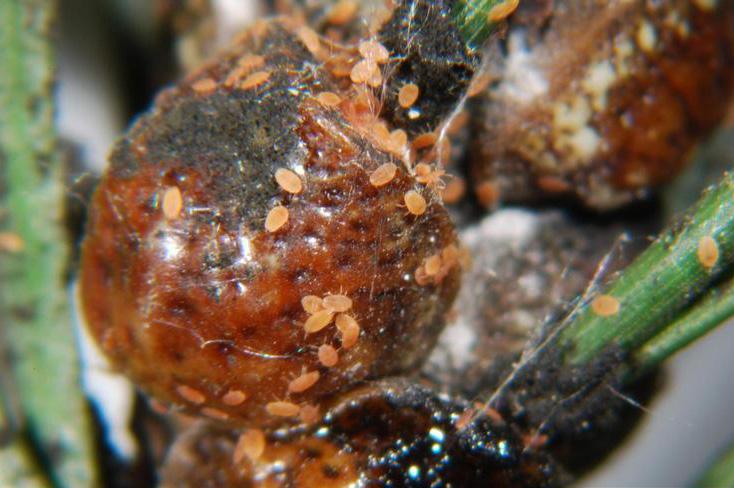Christmas tree field report – April 28, 2025
Updates on pest management, scouting and farm notes from Christmas tree producers across Michigan.

Growing degree day information
With very warm temperatures over the last few weeks, some areas in Michigan have rapidly accumulated growing degree days (GDD50). Currently, areas in southern lower Michigan are around 200 GDD50 , while many areas in northern Michigan are near 50 (Photo 1). Comparing GDD50 to a “normal” year, a very strong boundary line in Michigan has developed. Most of the southern Lower Peninsula are about two weeks ahead of normal, while areas in northern Lower Peninsula are near normal, and most of the Upper Peninsula is one to two weeks behind normal.
The 2025 Michigan Christmas Tree Pest Management Guide can assist you in determining what control products and treatment timings are available based on your specific location in Michigan.
Insect and disease updates
Spongy moth is generally a minor issue to Christmas trees, but it is an invasive and federally regulated pest. If you plan to move trees outside of the spongy moth quarantined area, you must have a compliance agreement with the Michigan Department of Agriculture and Rural Development. Mandatory treatment windows for spongy moth have now opened for counties in southern Michigan (Photo 2). Dimilin is an excellent control product, with a long residual control and softer effects on beneficial insects. If you plan on using dimilin, Michigan State University Extension recommends contacting your chemical supplier as growers have reported difficulty in sourcing this product.

Are you finding abnormal pineapple-shaped structures in spruce or Douglas fir trees (Photo 3)? These are caused by an adelgid, either by Cooley spruce gall or eastern spruce gall adelgid, depending on the tree species infected. The chemical treatment window for this pest is early at 25 to 100 GDD50, and some areas of the state have already passed this point. A fall treatment window at 1,500 to 1,600 GDD50 is also an option if you have missed the spring window. Cultural practices to limit damage include pruning out and burning current year galls prior to this summer (prior to adults emerging from galls at 1,500 GDD50).

There has been a report of Scots pine trees covered with a sooty mold (Photo 4). This sooty mold issue was caused by the feeding and release of honeydew from pine tortoise scale. This is a very challenging pest to control due to the long interval that crawlers are active (400 to 1,000 GDD50). Trees with severe infestations should be culled and burned to limit the unaffected trees. Chemical treatment should target crawlers, as they have no protection from the control product. Target initial applications near 400 GDD50. Treatments need to have excellent spray coverage and will likely require repeat applications over the growing season to catch late emerging crawlers. Michigan State University (MSU) Extension recommends scouting for the emergence of crawlers (Photo 5) over the course of the summer to determine if additional sprays are warranted.


Weed control
Check the MSU Extension Christmas Tree Weed Management Guide for a detailed list of many herbicide products. Frequency is a recently new herbicide labeled for Christmas trees and may be a useful tool in preventing or managing herbicide resistant weeds. Most spring preemergent herbicides need to be applied prior to tree budbreak.
Want to request a farm visit? Contact Bill Lindberg at lindbe35@msu.edu or 616-438-2738 for assistance on Christmas tree related problems.



 Print
Print Email
Email




